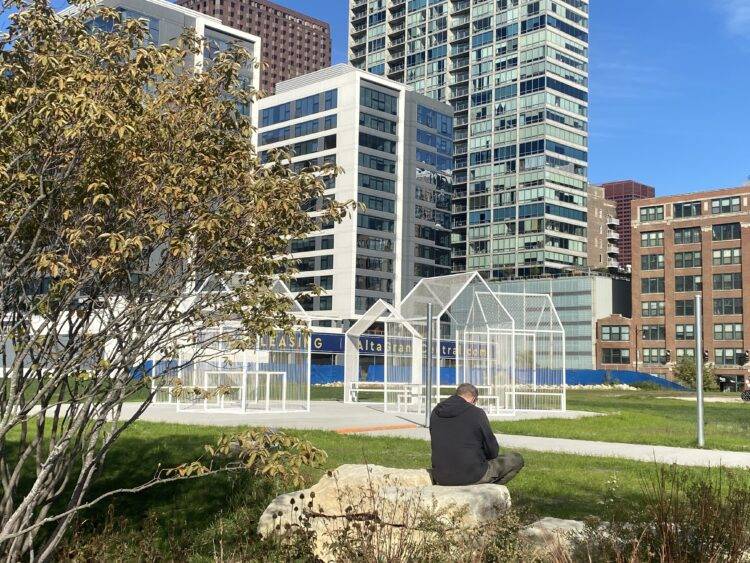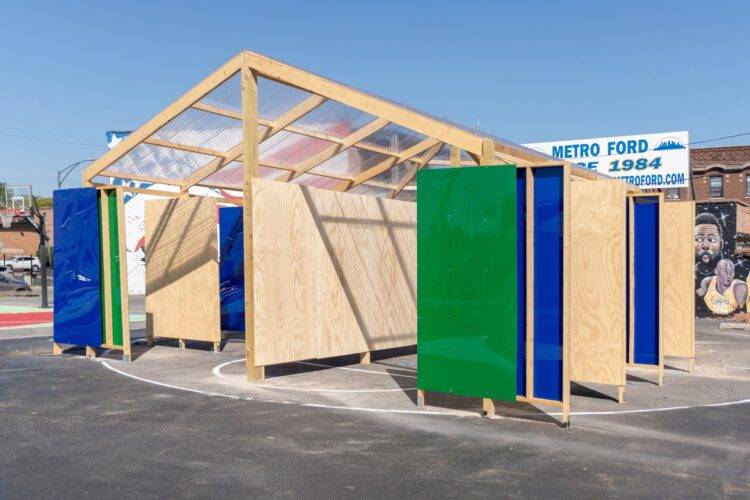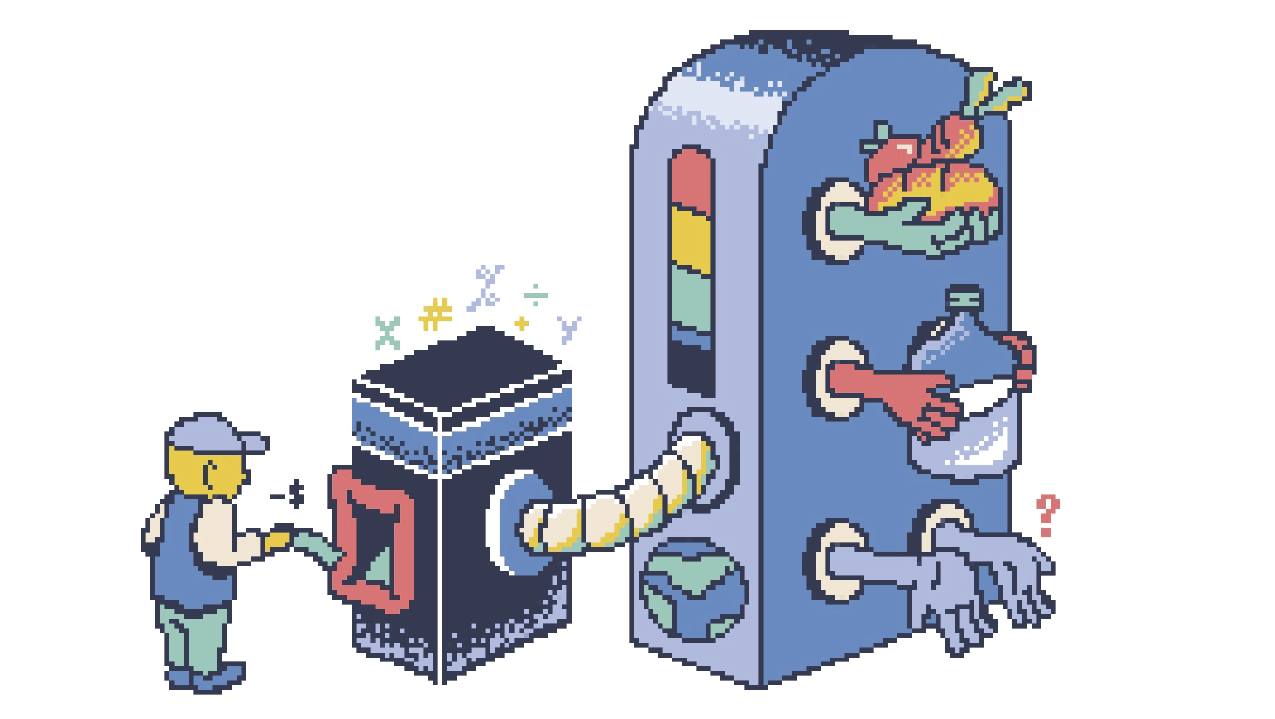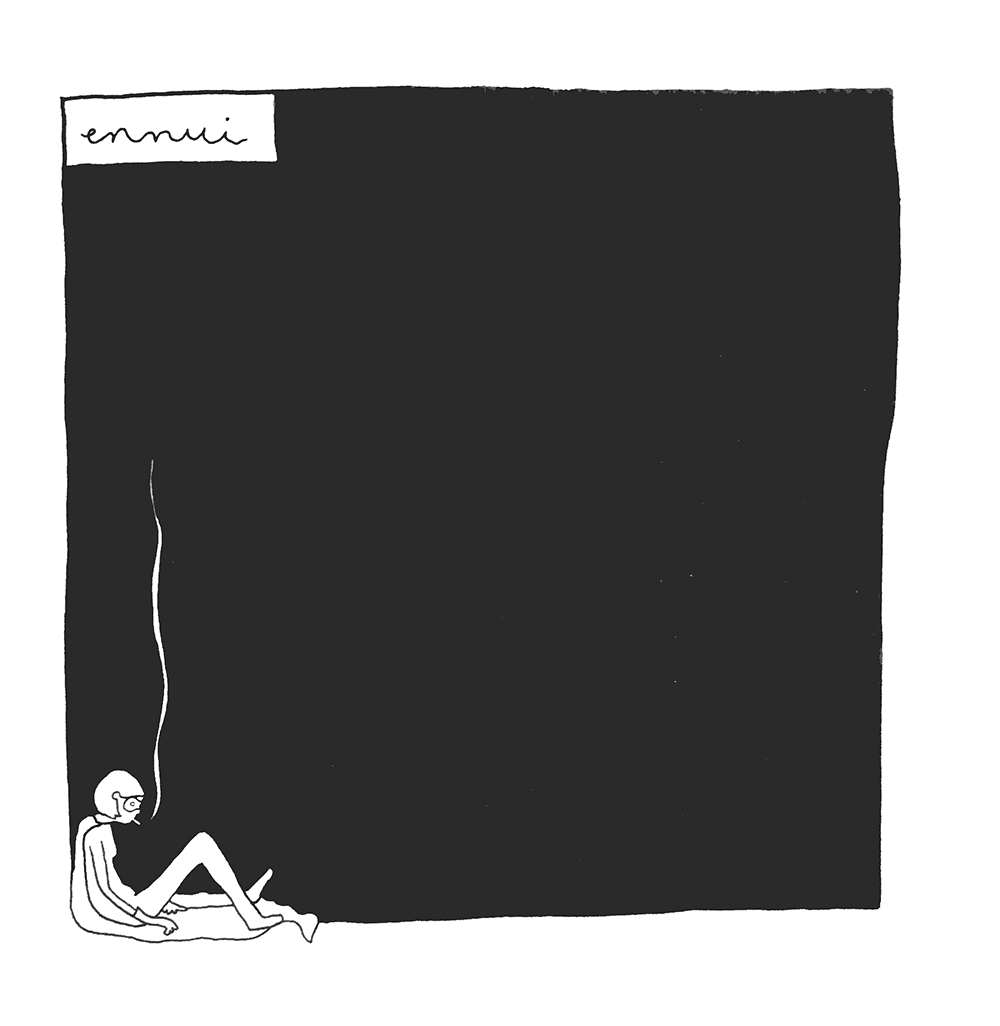
“The Available City,” the title of the 2021 Chicago Architecture Biennial (CAB), sews together installations, exhibitions, workshops, and programs from neighborhoods throughout Chicago. While Biennial themes have tended to be broad and obscure, like the “… and other such stories” 2019 edition, the 2021 Biennial addresses a tangible issue.
Why is Chicago an “available” city? According to the Biennial’s statement, there are more than 10,000 city-owned vacant lots in Chicago, an area equal to the area of the Loop, many of which point to longstanding racism and disinvestment by the city. With the joint efforts of community organizations, design studios, and architectural firms, these empty spaces can be utilized and redesigned for new and creative purposes. The wish of the organizers is to make these sites accessible and productive spaces for the people of Chicago.
The curatorial team led by David Brown, a designer, researcher, and educator based at the School of Architecture at the University of Illinois at Chicago, makes use of the whole city for the biennial. Architecture projects and weekend programs take place digitally and in person throughout neighborhoods including North Lawndale, Woodlawn, Bronzeville, Pilsen, South Loop, the Loop, and Edgewater, accompanied by archival exhibitions in the Loop and Gold Coast.

Chicago Cultural Center
Our starting point is the Chicago Cultural Center. Once the main venue for previous CABs, the center now only keeps a small gallery for this year’s biennial, which seems quite empty at first glance, with few contents on two opposite walls. A video introduces site-specific projects with narration from project leaders in various cultural organizations such as Project H.O.O.D. and Grow Greater Englewood. A city map next to the screen compares the area of vacant lots to the Loop. Several computer-aided 3D designs and photorealistic views of public facilities point to real projects happening in neighborhoods beyond the small gallery. Two other exhibitions at the center include “The Great Chicago Fire in Focus” and “Successful Failures,” which represent two different facets of the city — a disastrous historical scene and a promising contemporary grassroots art project, respectively.

Graham Foundation
At the Graham Foundation for Advanced Studies in the Fine Arts, a prairie-style mansion on the Gold Coast, you’ll find global case studies of community-led projects. On the second floor, I encounter the story of Restaurante Los Manantiales in Mexico City, presented by Departamento del Distrito, featuring photos, data, and found objects from the site. This flower-shaped building was constructed in the 1950s on top of the remnants of an Aztec agricultural system. The architecture once embraced customers, including famous artists and politicians, embodying the thriving economy and culture at that time; but it later deteriorated due to unregulated urban development and natural disasters. The unraveling is reflected by glass shards from doors and windows displayed in the exhibition.
South Side Neighborhoods
On the South Branch of the Chicago River, a seven-acre site has sat vacant for 40 years, since the demolition of the Chicago Great Western Freight Warehouse. An ongoing construction project with designs from architectural firm Perkins&Will will transform the space into four residential towers with a public green space called Southbank Park. An installation called “River Frame,” by design consultant group PORT, is situated in front of the construction cranes. Consisting of five small, white, steel-frame pavilions, the installation commemorates the industrial history of the place with their warehouse-like shapes. Each one contains wooden seats and tables at different heights to relax on. Despite the uncertainty of future rent costs in this prominent location, the installation does provide an open gathering place for all neighbors.

In Woodlawn, organizations like Project H.O.O.D. (Helping Others Obtain Destiny) view the biennial as a platform to showcase their ongoing work toward redevelopment. Some of their work includes turning vacant sites into colorful basketball courts, spaces for art performances, and communal gatherings like the “Harvest Fest” this past October.
Project H.O.O.D.’s biennial site hosts groups of wooden cubicles under canopies designed for potential exhibitions about local history, and also serve as spaces for the youth to gather with their friends. The designers hope that young people can have fun and feel safe in this artistic space.
The Englewood Village Plaza, designed by Grow Greater Englewood and Atelier Bow-Wow, also serves as an outdoor space to preserve South Side culture, and create a comfortable feeling of home. Near its garden, the site will hold weekly food markets with local farmers, and film screenings for cultural discussions at a long table.
In Bronzeville, community gardens and market spaces for product exchange are being hosted by Borderless Studio, The Open Workshop, and Washington Park Development Group for the duration of the biennial and afterwards. These organizations believe that local residents, artists, and vendors can develop creative career workshops and share social service resources in these public spaces.
West Side Neighborhoods
The West side features youth programs and sports sites in Bell Park of North Lawndale, alongside architectural projects dedicated to permaculture — an approach to land management that imitates the no-waste, closed loop systems seen in diverse natural systems.
El Paseo Community Garden in Pilsen will be completed in three years, and is host to ongoing collective gardening days, children’s garden days, beekeeping programs, and a dog run. Community Christian Alternative Academy in North Lawndale has also been developing a food forest called PermaPark that will provide fresh food for the community to deal with poverty, obesity, and lack of education about healthy lifestyles.
Our journey ends in North Lawndale at the Central Park Theater. Moving from exhibition venues, archives, public sites, and gardens to this empty performance venue with a 104-year history, I start to reconsider what architecture really provides. The Central Park Theater opened in 1917 and used to be a hub for filmmakers, musicians, and residents before it was turned into a church in 1971 (which also held community concerts). It deteriorated due to a lack of financial support, and remained vacant until today. Now a fundraising program for the building’s restoration, spearheaded by the Central Park Theater Restoration Committee, is on track to bring the venue back to life. The committee encourages people to share their memories of the theater and suggestions for its future use through a survey.
“When you look at a vacant lot, you are not looking at the vacant lot. You are looking at people.” says Blanche Killingsworth from the North Lawndale Historical and Cultural Society. “You are looking at history. So imagine what was there before it happened,”
The biennial ends on December 18, but this is not the end of the thriving projects scattered across the city. They are constantly evolving and should not become archives locked in drawers, nor stagnant construction projects isolated from their community members. The city is a permanent venue for exhibition, co-curated by all its citizens.
Yunyao Que (MA 2023) lingers among art, tech, and reality. She constantly visits the white cliffs near Brighton in her dreams. You can contact her through Instagram: @yunyaoq or email: [email protected].







